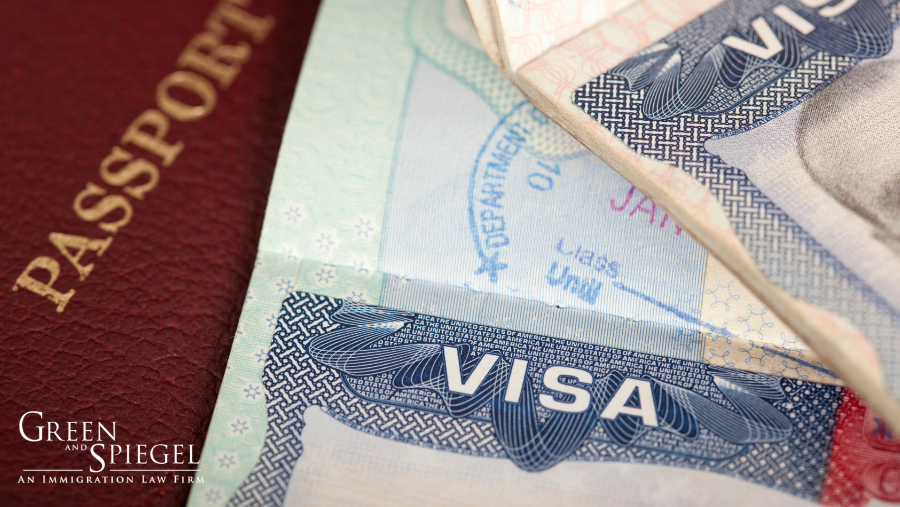Quick Takeaways
- New Form I-9 and Alternative Procedure for remote document verification available as of August 1, 2023, old version will be obsolete as of November 1, 2023.
- Will make permanent, with slight alterations, COVID-19-induced accommodations for verifying proof of identity and/or work authorization remotely.
- Will only be available to certain employers prospectively, as well as retrospectively for hires made between March 20, 2020 and July 31, 2023, though all participating employers must be enrolled in E-Verify.
- Updated version of Form I-9 and Instructions compressed and tailored to capture Alternative Procedure.
On July 21, 2023, the American Immigration Lawyers Association (“AILA”) obtained an advance copy of an updated version of the Form I-9, as well as a Final Rule concerning the new Form I-9 and implementing an Alternative Procedure to remotely verify employees’ documentation proving their identity and/or authorization to work in the United States. The new Form I-9 and Alternative Procedure will take effect on August 1, 2023, as the U.S. Department of Homeland Security (“DHS”) ends its COVID-19-era accommodations for hires made between March 20, 2020 and July 31, 2023, and just in time for employers required to physically reverify Form I-9 documentation processed remotely within the aforementioned period 3-year-plus period.
Brief History – I-9 Compliance from 1986 to March 19, 2020
By way of background, it is important to understand how COVID-19 impacted Form I-9 process, which has been a requirement for U.S. employer since the last time the federal government instituted comprehensive immigration reform in 1986. For almost 40 years, U.S. employers have been mandated to verify incoming employees’ identity and authorization to work within three days of their hiring. Employers fulfill this requirement through completing Form I-9, which demands that the employee in question present documentation that establishes their identity and/or their eligibility to work in the United States. The most recent version of the Form I-9 has been in use since October 2019, and will still be available through the end of October 2023.
Up until the onset of the COVID-19 global pandemic, U.S. employers had no choice by examine the original versions of these documents, in person, or through an authorized third-party. The failure to correctly and/or timely complete the Form I-9 can result in DHS fines. And depending on the size of the organization, as well as the size and nature of the violations (a handful of technical violations vs. dozens of substantive violations), such fines could lead to an employer’s financial ruin.
COVID-19 Flexibilities – March 20, 2020 – July 31, 2023
Shortly following the onset of the COVID-19 global pandemic and in subsequent updates over the past 3 years, DHS, through USCIS, has offered numerous flexibilities for U.S. employers hiring workers who, due to COVID-19 restrictions, could not present original identity and employment authorization documentation, in-person, to complete the I-9 process. Among these flexibilities was the option of performing Form I-9 inspections (speaking to the employee and reviewing the documents they presented to establish identity and work authorization) remotely. In so doing, though, DHS also envisioned a time when COVID-19-era hires would be permitted to return to in-person work, and at which time U.S. employers (or an authorized third party) would be required to re-verify the physical versions of each individuals’ identity and work authorization documentation to confirm their ability to work in the United States. And following the Federal Government’s decision to let all COVID-19-related emergency measures expire earlier this year, on May 4, 2023, DHS announced that its Form I-9 flexibilities would not be extended beyond July 31, 2023, and that the obligations to meet face-to-face with employees, reviewing their documents and re-verifying the Form I-9, would resume in-full and with a 30-day grace period during which all re-verifications would need to take place.
August 1, 2023 – The Arrival of a New Form I-9 and Remote Alternative Procedure
In this context, U.S. employers around the country began planning how they would physically re-verify original Form I-9 documentation within the prescribed 30-day grace period starting August 1, 2023. And for many U.S. employers, these efforts will need to move forward and be executed over the next month or so.
But for certain employers, as of August 1, remote Form I-9 document verification will be available for COVID-19-era hires, and prospectively for future hires, through what DHS is calling an Alternative Procedure. The Alternative Procedure itself is quite straightforward, requiring that the following steps be taken within the same 3-day window after an employee is hired:
- The employee must transmit scans or clear photos of the front(s) and back(s) their identity and/or employment authorization document(s) to the employer, before taking Step 2.
- The employer must hold a live, virtual meeting with the employee, wherein the employee presents their I-9 documentation, front and back, to the employer.
- The employer must either annotate the old version of the Form I-9, or check the applicable box on the new Form I-9, indicating that they have examined the employee’s Form I-9 documentation through the Alternative Procedure.
- Retain clear scans or photographs (“legible copies”) of the documentation presented with the Form I-9.
- If required, present all Form I-9 and clear scans or photographs of Form I-9 documentation in response to a DHS investigation.
In addition to these steps, DHS has made clear that an employer must be enrolled in E-Verify at the worksite in question, and be in good standing with E-Verify, to use the Alternative Procedure moving forward. Likewise, the employer must have been enrolled in E-Verify when it hired a worker between March 20, 2020 and July 31, 2023, to use the Alternative Procedure to re-verify those employees’ physical documentation. Participating employers must also ensure that their workers inspecting Form I-9 documentation remotely have received the requisite training in fraud detection and anti-discrimination, with the latter point especially important, as an employer may not utilize the Alternative Procedure to discriminate against certain employees. Indeed, an employer must beware of its ongoing need to implement the Alternative Procedure, or traditional in-person document verification, in a way that does not negatively impact certain classes of employees over others.
The new Form I-9 and its Instructions have been amended to account for the Alternative Procedure and affirm other key issues such as “Acceptable Receipts,” and condensed to more efficiently gather the information needed to verify an individual’s authorization to legally work in the United States. Even still, the Final Rule and Form I-9 are still new and subject to additional interpretation as they come into effect. Until then, there are outstanding questions as to which employers may participate in the Alternative Procedure, and how exactly such employers may utilize past efforts to satisfy these new requirements.
Next Steps – Stay Tuned!
Please look out for future updates in this space, and of course, please do not hesitate to contact our office should you have any questions or concerns regarding the new Form I-9, Alternative Procedure, or any other topic pertaining to workplace compliance.







